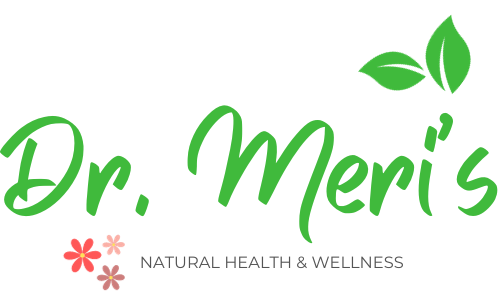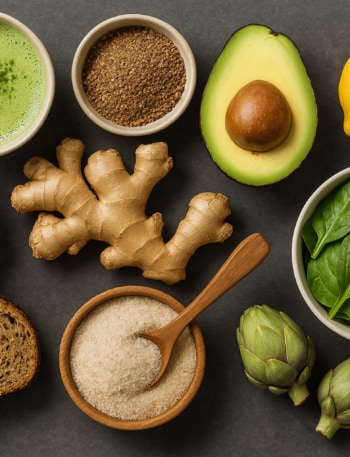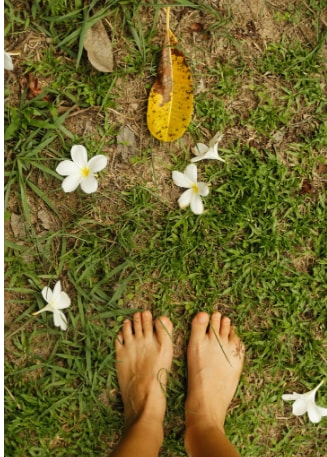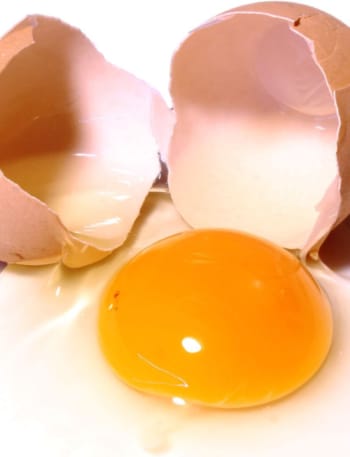
If you’ve ever searched for a natural remedy during the winter season, you’ve probably come across something called “flu and cold tea.” It sounds comforting; a soothing herbal blend to ease congestion, sore throat, and fatigue.
But here’s what current research actually shows: there’s no single herbal tea that cures the flu or the common cold. That said, several natural ingredients, such as green tea, elderberry, echinacea, licorice root, ginger, and peppermint, can help your body recover by easing symptoms, calming inflammation, and supporting your immune system.
So, while herbal flu and cold tea won’t replace medical treatment, it can offer real comfort and gentle support when you’re feeling under the weather. Let’s look at what the research says about these powerful herbs and how to use them effectively.
What Research Says About Herbal Ingredients for Flu and Cold Symptom
Researchers have studied a range of herbs and natural compounds for their ability to help the body manage viral infections such as influenza and the common cold. While none of them are cures, many show promise in reducing symptom severity and duration.
| Ingredient | Active Compounds | Findings from Research |
|---|---|---|
| Green Tea | Catechins (EGCG), theanine | Studies show green tea catechins may reduce the risk of catching influenza or a cold and can slow down viral replication.1 |
| Elderberry | Flavonoids | Randomized controlled trials found elderberry extract shortens cold and flu duration and eases symptoms.2 |
| Echinacea | Alkamides, polysaccharides | Some studies show echinacea supports immune function and reduces inflammation, lowering the risk of recurrent respiratory infections and complications thereof. 3 |
| Licorice Root | Glycyrrhizin | Laboratory research shows glycyrrhizin can block viral entry into cells and reduce inflammation in respiratory infections. 4 |
| Pelargonium sidoides (Umckaloabo) | Coumarins, polyphenols | Extracts have shown benefits for treating acute bronchitis and upper respiratory tract infections.5 |
| Ginger | Gingerol, shogaols | Fresh ginger can inhibit viral attachment, reduce congestion, and calm nausea; a perfect all-rounder for colds. 6 |
| Lemon Balm | Polyphenols | Research shows lemon balm extract can suppress replication of influenza A (H1N1) and other viral strains. 7 |
| Peppermint | Menthol | Menthol acts as a natural decongestant, helping open nasal passages and soothe coughs. 8 |
What Is a “Synergistic Flu and Cold Tea”?
A flu and cold tea is more than just one herb steeped in water, it’s a purposeful blend of ingredients that target different symptoms.
For instance:
- Some herbs are antiviral, helping your body block or weaken the virus.
- Others are anti-inflammatory, easing sore throats and sinus pressure.
- A few act as decongestants or immune boosters, giving your system a nudge when it needs it most.
Research-Informed Herbal Tea Combinations
Here are three research-informed herbal tea combinations that work together to bring relief during flu and cold season.
1. Antiviral and Immune-Support Tea
Ingredients:
- Elderberry (1 tablespoon dried berries or flowers)
- Echinacea (1 teaspoon dried root or leaves)
- Licorice root (½ teaspoon dried root)
Why it helps:
Elderberry’s flavonoids can shorten cold and flu symptoms, echinacea may strengthen your immune system, and licorice root adds antiviral and throat-soothing benefits.
How to make it:
Simmer elderberries and licorice root in water for 10–15 minutes. Remove from heat, add echinacea, and let steep for another 5–10 minutes. Strain and sweeten with honey if desired.
2. Soothing and Anti-Inflammatory Tea
Ingredients:
- Fresh ginger slices (4–5 pieces)
- Peppermint leaves (1 teaspoon dried or a few fresh sprigs)
- Thyme (½ teaspoon dried leaves)
- Honey (added after steeping)
Why it helps:
Ginger eases congestion and body aches, peppermint clears airways, thyme has antibacterial effects, and honey calms sore throats while coating mucous membranes.
How to make it:
Boil ginger for 5–10 minutes, add peppermint and thyme, then steep for another 5 minutes. Strain, cool slightly, and add honey before drinking.
3. Prevention and Daily Wellness Tea
Ingredients:
- Green tea (1 teaspoon loose leaf or one bag)
- Lemon (juice or slices)
- Cinnamon stick (1 small piece)
- Turmeric (¼ teaspoon powder or fresh slice)
- Black pepper (a pinch)
Why it helps:
Green tea’s catechins boost immune response, lemon provides vitamin C, cinnamon has antimicrobial warmth, and turmeric with black pepper offers antioxidant and anti-inflammatory power, great for daily use during cold and flu season.
How to make it:
Steep green tea and cinnamon in hot (not boiling) water for 3–5 minutes. Add lemon and turmeric with black pepper, stir, and enjoy.
Before You Brew: What to Keep in Mind
Before trying any herbal flu and cold tea, consider these important tips:
- Check with your doctor. Herbal teas can support healing but should not replace prescribed medicine.
- Watch for side effects. Even natural ingredients can have interactions. For example, licorice root may raise blood pressure.
- Stay hydrated and rest. Herbal teas work best when combined with good sleep and fluids.
Disclaimer: These teas are intended to complement, not replace, medical care. Seek professional advice if symptoms persist or worsen.
The Takeaway
There’s no miracle flu and cold tea, but research supports the idea that certain herbs can work together to help your body recover.
Ingredients like elderberry, echinacea, ginger, peppermint, licorice root, and green tea bring antiviral, anti-inflammatory, and soothing properties that make you feel better naturally.
So, when you’re battling a stuffy nose or lingering cough, a warm cup of herbal flu and cold tea might not cure the virus, but it can comfort your body, calm your throat, and give your immune system a gentle boost.
Sometimes, that’s the best kind of medicine nature offers.
You might also like:
Science-Backed Natural Remedies For Colds and Flu
Shilajit: Evidence-Based Health Benefits and Safety
Science-Backed Alternative Medicines for Premenstrual Syndrome
Frequently Asked Questions About Flu and Cold Tea
1. Is flu and cold tea safe for children?
In most cases, a gentle cup of flu and cold tea made with natural ingredients such as ginger, lemon, and honey is safe for children over one year old. However, never give honey to babies under 12 months because of the risk of infant botulism. For herbs like echinacea or licorice root, it’s best to check with your child’s doctor before use.
2. Can flu and cold tea really cure a cold or the flu?
No, flu and cold tea cannot cure a viral infection, but it can make you feel better while your body heals. Research suggests that ingredients such as elderberry, peppermint, and ginger may help reduce inflammation, relieve congestion, and shorten the length of cold or flu symptoms when paired with rest and plenty of fluids.
3. How often can I drink flu and cold tea?
You can enjoy flu and cold tea two or three times a day, especially during the first few days of symptoms. Choose mild ingredients and avoid drinking strong herbal teas continuously for long periods. It’s best to rotate ingredients and listen to your body.
4. What is the best tea for a sore throat and congestion?
A soothing flu and cold tea made with ginger, honey, lemon, and peppermint is one of the most comforting options. Ginger helps with inflammation, honey coats the throat, peppermint opens airways, and lemon adds a refreshing boost of vitamin C.
5. Can pregnant women drink flu and cold tea?
Some ingredients, such as ginger and lemon, are generally considered safe during pregnancy when used in moderation. Others, like licorice root and echinacea, should be avoided or used only after speaking with your healthcare provider. If you are expecting, always consult your doctor before trying any herbal teas.
6. When is the best time to drink flu and cold tea?
You can drink flu and cold tea at any time of the day, but it feels especially soothing in the evening before bed. A warm cup can help relax your body, ease throat irritation, and make breathing easier while you rest.
7. What ingredients should I avoid in flu and cold tea?
Avoid using large amounts of herbs such as licorice root if you have high blood pressure or heart problems. It’s also best to skip caffeinated teas late at night if you’re trying to rest. Always choose clean, good-quality herbs to make sure your tea is safe and effective.
8. Can I make flu and cold tea in advance?
Yes, you can prepare flu and cold tea ahead of time and store it in the refrigerator for up to two days. Warm it gently before drinking, but avoid boiling it again so the beneficial compounds in lemon, honey, and herbs stay intact.
9. What’s the difference between flu and cold tea and immune boosting tea?
Flu and cold tea is meant to ease symptoms like congestion, sore throat, and fatigue once you’re already sick. Immune boosting tea, on the other hand, is used to strengthen your immune system and help prevent illness. Many of the same ingredients are used in both, but the purpose and timing are different.
10. Is it okay to mix different herbs in one flu and cold tea?
Yes, combining a few herbs can actually make your flu and cold tea more effective. For example, mixing ginger, peppermint, and thyme can help clear sinuses and soothe coughs at the same time. Start with small amounts and adjust to taste to find what works best for you.
References
- Umeda, M., Tominaga, T., Kozuma, K., Kitazawa, H., Furushima, D., Hibi, M., & Yamada, H. (2021). Preventive effects of tea and tea catechins against influenza and acute upper respiratory tract infections: a systematic review and meta-analysis. European journal of nutrition, 60(8), 4189–4202. https://doi.org/10.1007/s00394-021-02681-2
- Tiralongo, E., Wee, S. S., & Lea, R. A. (2016). Elderberry Supplementation Reduces Cold Duration and Symptoms in Air-Travellers: A Randomized, Double-Blind Placebo-Controlled Clinical Trial. Nutrients, 8(4), 182. https://doi.org/10.3390/nu8040182
- Schapowal, A., Klein, P., & Johnston, S. L. (2015). Echinacea reduces the risk of recurrent respiratory tract infections and complications: a meta-analysis of randomized controlled trials. Advances in therapy, 32(3), 187–200. https://doi.org/10.1007/s12325-015-0194-4
- Zuo, J., Meng, T., Wang, Y., & Tang, W. (2023). A Review of the Antiviral Activities of Glycyrrhizic Acid, Glycyrrhetinic Acid and Glycyrrhetinic Acid Monoglucuronide. Pharmaceuticals (Basel, Switzerland), 16(5), 641. https://doi.org/10.3390/ph16050641
- Cinatl, J., Jr, Wass, M. N., & Michaelis, M. (2024). Multiple mechanisms enable broad-spectrum activity of the Pelargonium sidoides root extract EPs 7630 against acute respiratory tract infections. Frontiers in pharmacology, 15, 1455870. https://doi.org/10.3389/fphar.2024.1455870
- Famurewa, A. C., Akhigbe, R. E., George, M. Y., Adekunle, Y. A., Oyedokun, P. A., Akhigbe, T. M., & Fatokun, A. A. (2025). Mechanisms of ferroptotic and non-ferroptotic organ toxicity of chemotherapy: protective and therapeutic effects of ginger, 6-gingerol and zingerone in preclinical studies. Naunyn-Schmiedeberg’s archives of pharmacology, 398(5), 4747–4778. https://doi.org/10.1007/s00210-024-03623-5
- Mazzanti, G., Battinelli, L., Pompeo, C., Serrilli, A. M., Rossi, R., Sauzullo, I., Mengoni, F., & Vullo, V. (2008). Inhibitory activity of Melissa officinalis L. extract on Herpes simplex virus type 2 replication. Natural product research, 22(16), 1433–1440. https://doi.org/10.1080/14786410802075939
- Eccles R. (1994). Menthol and related cooling compounds. The Journal of pharmacy and pharmacology, 46(8), 618–630. https://doi.org/10.1111/j.2042-7158.1994.tb03871.x
Sign Up for Our Email List
Get our latest articles, healthy recipes, tips, and exclusive deals delivered straight to your inbox with our newsletter.
We won't send you spam. Unsubscribe at any time.








